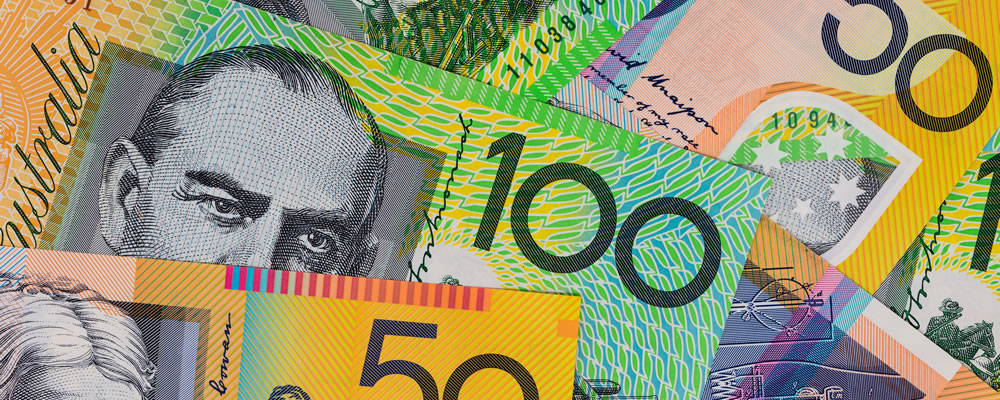Euro Australian Dollar (EUR/AUD) Exchange Rate Muted as RBA Unlikely to Cut Interest Rates
UPDATE: The Euro Australian Dollar (EUR/AUD) exchange rate was left flat on Wednesday afternoon, and the pairing is currently trading at around AU$1.6179.
The Australian Dollar was left muted as the county’s inflation continued to undershoot the Reserve Bank of Australia’s (RBA) inflation target.
However, headline inflation edged up slightly in September, and Q3 inflation was higher than expectations which likely provided the ‘Aussie’ with an upswing of support.
Added to this, economists argued that there were some tentative signs that inflation could be bottoming out, and CBA economist, Kristina Clifton noted:
‘Fifteen quarters of misses is starting to feel like a long time, and it’s likely to be a very several more years until inflation picks up to target.
‘Given the three cash rate cuts since June, we think that the RBA will want to take some time to assess the impacts of lower interest rates before deciding on their whether to cut again.’
Euro Australian Dollar (EUR/AUD) Exchange Rate Slides as US-China Trade Deal ‘Ahead of Schedule’
The Euro Australian Dollar (EUR/AUD) exchange rate slumped today, and the pairing is currently trading at around AU$1.6180.
The risk-sensitive Australian Dollar was provided with an upswing of support on Tuesday thanks to hopes US-China trade tensions were easing.
US-China optimism increased after US President Donald Trump said Phase One of the trade deal was ‘ahead of schedule’.
Speaking on Monday, President Trump said:
‘We are looking probably ahead of schedule to sign a very big portion of the China deal, and we’ll call it phase one but it’s a very big portion.
‘So we’re about, I would say, a little bit ahead of schedule, maybe a lot ahead of schedule. Probably we’ll sign it.’
Added to this, risk sentiment rose as an increase in general optimism that the UK will avoid crashing out of the European Union without a deal and the US Federal Reserve is likely to cut rates for the third time this year.
Commenting on this, Deutsche Bank strategist, Jim Reid said in a note:
‘That trifecta of positive developments has certainly underpinned the recent rally.’
Euro (EUR) Falls as Eurozone Corporate Lending Slows
Meanwhile, the Euro was left under pressure as data from Monday revealed that after a period of resilience in the bloc, corporate lending is beginning to slow.
Bank lending to companies in the Eurozone slumped, with corporate loan growth falling from 4.3% to 3.7% in September, while household lending remained steady at 3.4%.
This suggests that despite the fresh stimulus launched by the European Central Bank (ECB) that encourages banks to continue to provide credit, they are instead taking credit out of the economy.
RBA: ‘Extraordinarily Unlikely’ to See Negative Interest Rates
The ‘Aussie’ rose against the Euro on Tuesday following a speech from the Reserve Bank of Australia (RBA) Governor Philip Lowe.
During his speech, Lowe said that the bank was prepared to ease monetary policy further if needed, and added that he was confident rate cuts were helping the economy.
He also added that it was ‘extraordinarily unlikely’ to see negative interest rates, which likely provided the Australian Dollar with an upswing of support.
However, the RBA Governor reiterated that the bank would ‘require an extended period of low interest rates to reach full employment and for inflation to be consistent with the target.’
Added to this, the bank still expects to cut rates once again in early 2020 as the US Federal Reserve reverses all its rate hikes from 2018.
Euro Australian Dollar Outlook: Will Weak Inflation Weigh on AUD?
Looking ahead to Wednesday, the Australian Dollar (AUD) could slide against the Euro (EUR) following the release of the HIA new home sales data.
If HIA reveals September’s sales of new homes in Australia have slumped further than expected, the ‘Aussie’ is likely to slide.
Meanwhile, the release of Australia’s Q3 inflation rate could cause AUD to suffer further losses against the single currency.
If inflation does not rise as high as expected and continues to miss the Reserve Bank of Australia’s (RBA) target of 2-3%, the Euro Australian Dollar (EUR/AUD) exchange rate is likely to rise.



